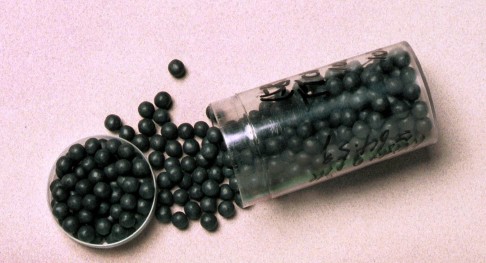Lead poisoning rare in Hong Kong, experts say, with most recent cases from Chinese medicine
PUBLISHED : Friday, 17 July, 2015, 11:56am
UPDATED : Friday, 17 July, 2015, 5:36pm
Emily Tsang [email protected]

Residents collect fresh water at a temporary distribution pipe at a public housing estate amid a lead in water scare. Photo: Dickson Lee
Fears of lead poisoning sparked by a water contamination scare that has spread from more than 10 Hong Kong public housing estates to a hospital and several private developments has seen hundreds of residents rush to take blood tests this week.
Yet health experts insist that even though levels of lead in water samples taken at the estates exceeded World Health Organisation guidelines, the risk of lead poisoning remained low.
Indeed, cases of lead poisoning are extremely rare in the city, with most not the result of drinking tainted water but from consuming Chinese herbal medicine contaminated with the metal, according to experts and local medical reports.
The poison treatment centre at United Christian Hospital, for example, has seen just two or three cases of lead poisoning in the past few decades. It reported an unusual case three years ago, in which a 41-year-old woman consumed the toxic substance by prolonged intake of ashes from burnt Chinese talismans, issued by a Taoist religious practitioner in mainland China, who claimed the “magical” practice could cure the patient’s “evil illness”.

These "bao ning dan" pills reportedly caused lead poisoning in a 23-year-old Hong Kong woman in 2001. Photo: SCMP Pictures
The woman later presented with progressive weakness in her arms and legs and was diagnosed with lead neurotoxicity. She had consumed the ashes with water three times a day for about a month, according to a report issued by the centre at the time.
“All of the lead poisoning cases we have seen were not related to water contamination,” Dr Chan Yiu-cheung, a consultant at the centre, said yesterday. “Lead poisoning is not very common.”
The water scare began last week when seven samples retrieved from the Kai Ching Estate in Kowloon City contained between 10.8 and 35.1 micrograms of lead per litre of water, the government announced last week. Those readings are higher than the 10mcg/l specified safe by the WHO.
Chan, however, said the health risk for most residents remained low although he advised them to stop consuming tap water and use bottled water instead.
In 2002, Tuen Mun Hospital reported that three patients were diagnosed with lead poisoning after consuming herbal pills, known as "bao ning dan", prepared by a traditional Chinese medicine practitioner.
The cases were reported in the Hong Kong Medical Journal, which said the main sources of lead poisoning in the city were paint and batteries during the industrial era. But the report pointed out lead-containing folk medicines remained a threat to public health in Asia and Latin America.
In the United States, drinking water in Washington was found with widespread lead contamination in 2001. In some case the lead levels were at least 83 times higher than the accepted Centres for Disease Control and Prevention safe limit of 15 parts per billion (ppb).
The incident left thousands of children with lifelong health risks and led to a re-evaluation of the use of chloramine in public drinking-water systems. Following the incident, the level of lead in tap water was tightened in line with CDC requirements under the US Safe Drinking Water Act.
According to the CDC, lead found in tap water usually comes from the corrosion of older fixtures or from the solder that connects pipes. When water sits in leaded pipes for several hours, lead can leak into the water supply.
The metal cannot be seen, tasted, or smelt in drinking water, so the only way to know whether water is contaminated is through laboratory tests.
Water that comes out of the tap warm or hot can contain much higher levels of lead than cold water, and boiling this water will not reduce the amount of lead, the CDC said.
It added most studies showed that exposure to lead-contaminated water alone would not be likely to elevate blood lead levels in most adults. But risk would vary depending on the individual, the circumstances, and the amount of water consumed.
Infants who drink formula prepared with lead-contaminated water may be at a higher risk because of the large volume of water they consume relative to their body size.
